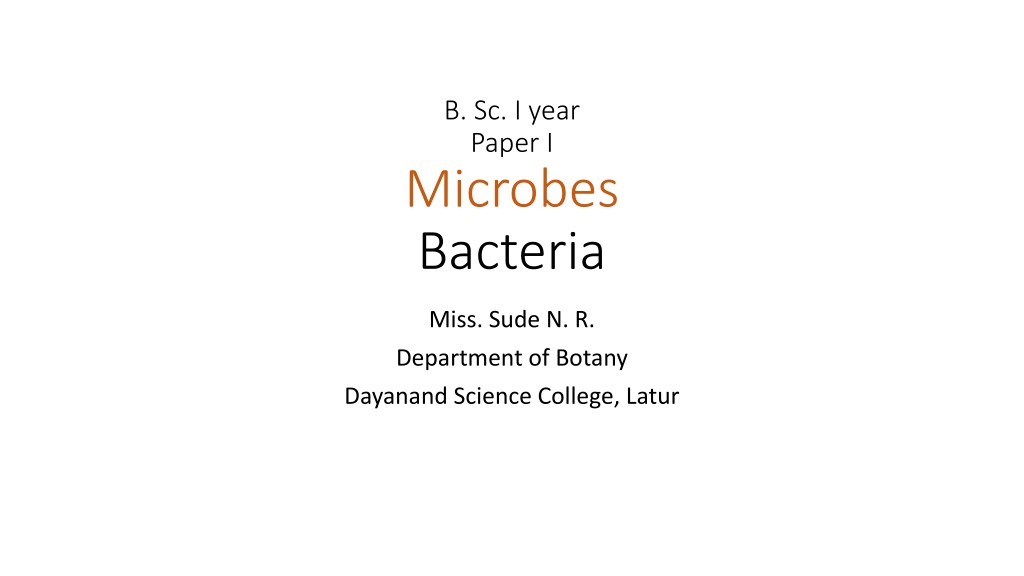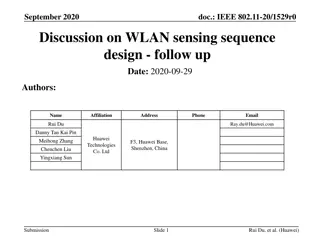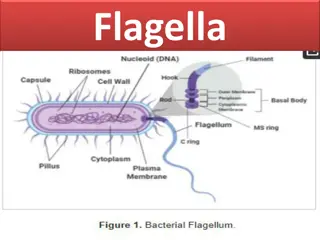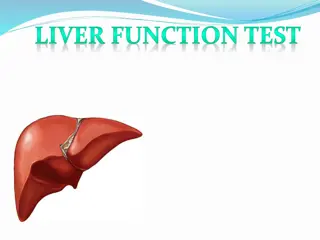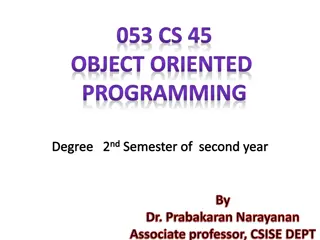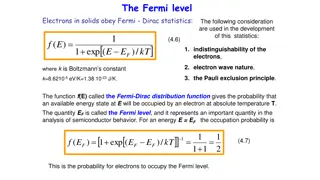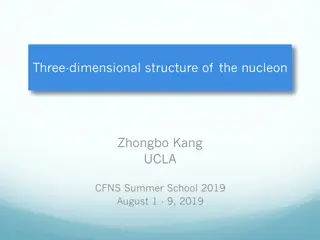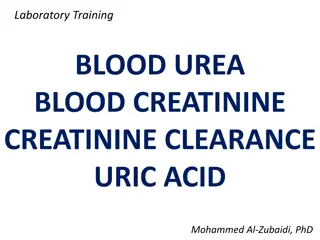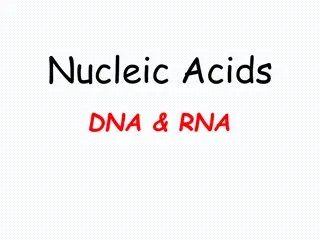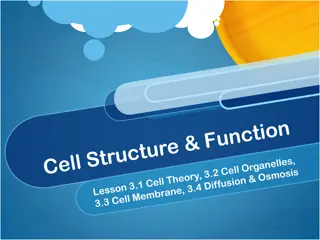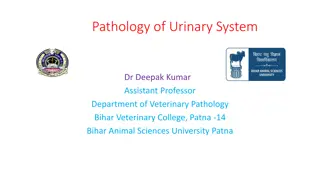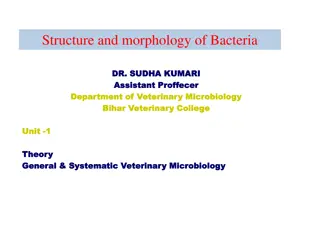Detailed Overview of Bacteria's Structure and Function
Explore the world of bacteria with a focus on their microscopic nature, general characteristics, ultrastructure of bacterial cells, and components like cell envelope, cytoplasm, and nuclear material. Uncover the diverse forms of bacteria, their mode of nutrition, reproduction methods, and unique features such as glycocalyx, cell wall, cell membrane, ribosomes, and more. Dive into the essential role bacteria play in various ecological environments and their significance in scientific research.
Download Presentation

Please find below an Image/Link to download the presentation.
The content on the website is provided AS IS for your information and personal use only. It may not be sold, licensed, or shared on other websites without obtaining consent from the author. Download presentation by click this link. If you encounter any issues during the download, it is possible that the publisher has removed the file from their server.
E N D
Presentation Transcript
B. Sc. I year Paper I Microbes Bacteria Miss. Sude N. R. Department of Botany Dayanand Science College, Latur
Bacteria Very small, primitive, microscopic, mostly unicellular prokaryotes Discovery- Anton Von Leeuwenhoek (1675) Animalcules Bacteriology: independent field for study Occurrence: omnipresent (water, air, soil, hot & cold temperatures)
General characters of Bacteria Unicellular, minute, primitive, microscopic & prokaryotic Mode of nutrition- Autotrophic, saprotrophic and parasitic Motile or non-motile Shows variety of forms- Spherical, rod shaped, spiral or helical, comma shaped, etc. Smallest living organism Typical prokaryotic structure- cell wall and protoplasm Aerobic or anaerobic Flagella- locomotary organ Kingdom Monera Reproduce sexually and asexually
Ultrastructure of Bacterial cell bacterial cell is composed of well developed cell envelope, cytoplasm and nuclear material 1. Cell envelop: 1. Glycocalyx 2. Cell wall 3. Cell membrane 2. Cytoplasm 1. Ribosome 2. Lamellae & Chromatophore 3. Mesosome 4. Cytoplasmic inclusions 3. Nuclear Material Plasmid Fig: Ultrastructure of Bacterial cell
Cell Envelop Glycocalyx: Outer layer, may be present or absent Nature variable- Thin (Slime) or Thick (Capsule) Capsulated: pathogenic Non-capsulated: non-pathogenic Cell wall: Next to glycocalyx, Thick and rigid Peptidoglycan= N-acetylglucosamine (NAG) + N-acetyl muramic acid (NAM) Porin proteins form aqueous channel through which several components pass in and out (Permeable) Cell membrane: Innermost layer called boundry or limiting layer of the cytoplasm Thin, papery, delicate Lipoprotein in nature Semipermeable Related to many physiological processes
Cytoplasm Granular and viscous in appearance Contains ribosomes, polysomes, Mesosomes, Lamellae, Chromatophore, cytoplasmic inclusions, nucleoid, plasmids, etc. Cell organelles like mitochondria, golgi body, endoplasmic reticulum, chloroplast are absent Contains reserved food material in the form of complex mixture of proteins, carbohydrates, lipids, vitamins & glycogen granules Ribosome: (Ribo=ribonucleic acid; soma=body) Cell organelle containing nucleic acid RNA 70S type (30S + 50S) Nucleoprotein in nature Act as site for protein synthesis Polysome/ Polyribosome: A cluster of ribosomes held together by a strand of messenger RNA Fig: Ribosome Fig: Polysome
Lamellae & Chromatophore: Present in photosynthetic bacteria and cyanobacteria instead of chloroplast Lamellae consist of two parallel unit membranes which may be small or long, extending throughout the cytoplasm Chromatophore are hollow, spherical structure (300A diameter) Bacterial photosynthetic apparatus contain pigments with enzymes Mesosomes: Extensions Of plasma membrane Diverse function vary from cell to cell & from one growth phase to another Initiate DNA replication and septum formation during cell division Cytoplasmic inclusions: The cytoplasm shows variety of small bodies collectively called inclusions a) Granules: Cytoplasm appears granular due to the reserve materials like organic polymers, inorganic metaphosphate, etc. b) Vesicles: Some aquatic bacteria and cyanobacteria have membrane bound gas vesicle or vacuole to provide buoyancy in floating Fig: Chromatophore and Lamellae
Nucleoid Nucleus without nuclear membrane One, double stranded, circular DNA Similar to eukaryotic nucleus in function i.e. Governs the activities of cell (governer of cell) Without nucleolus and nuleoplasm Associated with non-histone protein and RNA Plasmid: extra-chromosomal DNA Circular, double stranded, autonomous Either free or integrated with chromosome Flagella: Organ of locomotion Cylindrical, hollow strand made of flagellin protein Pili: Elongate, rigid, tubular appendages Serve to connect to cells during conjugation Fig:Plasmid
Reproduction in Bacteria Reproduction: act or process of producing new copies Vegetative Reproduction: 1. Budding: Development of a bud or an outgrowth Nuclear Division Separation of Bud Development of bud into new cell Fig: Budding
Asexual Reproduction Binary fission Most common method of asexual reproduction Takes place during period of favourable conditions The process of splitting of Bacterial cell into two new equal daughter cells is called binary fission DNA Replication: Chromosome replicates resulting in the production of two circular chromosome Duplication at replication fork Semi-conservative replication Cell division: Protoplasm divides mitotically resulting into two parts Plasma membrane at middle of cell forms a construction which grow inwards Transverse wall thus formed splits the parent bacterial cell into two equal daughter cells. Fig: Binary fission
Sexual Reproduction Conjugation: The process in which DNA is passed from one cell to other by physical contact through a conjugation tube is known as conjugation Discovered by Lederberg and Tatum E. coli strain shows sexual differences, one acting as donor of genes (male-F+) and other as recipient of genes (female-F-) Donor strain produce F pili which act as conjugation tube Maleness is due to fertility (F) factor & not due to chromosomal gene In conjugation between F+ and F- a copy of F factor passes into female recipient cell converting it into male cell Fig: Conjugation between F+ male and F- female
